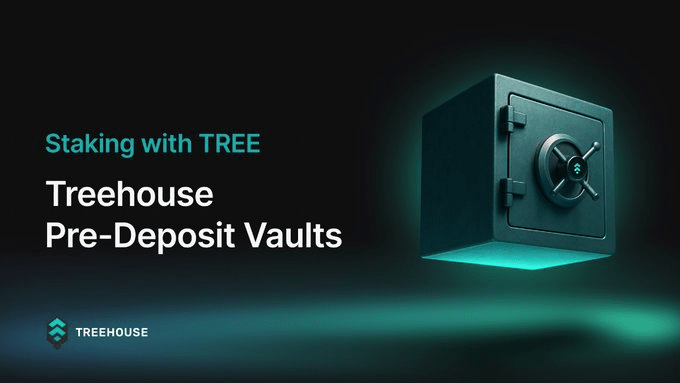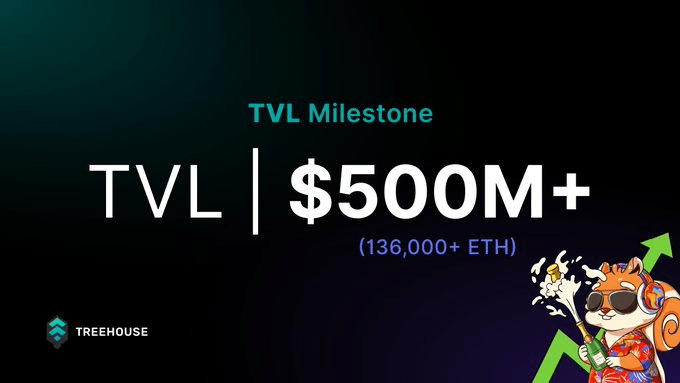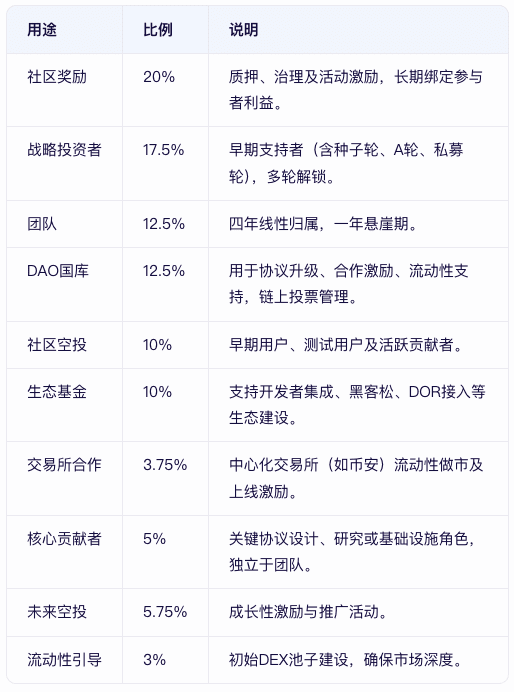
Project Overview
Treehouse is a decentralized fixed income protocol aimed at creating a 'decentralized fixed income layer' through tAssets (on-chain yield certificates) and decentralized quoted interest rates (DOR), unifying the on-chain interest rate market and providing standardized benchmark interest rates and fixed income product infrastructure for DeFi.
Core Advantage Analysis
1. Filling Market Gaps: Building on-chain interest rate benchmarks
DOR Mechanism: Through multiple Panelists submitting interest rate suggestions, combined with Delegator staking votes, an on-chain benchmark interest rate is formed (e.g., TESR, Treehouse Ethereum Staking Rate), solving the fragmentation of DeFi interest rates.
LIBOR-like Benchmark: DOR provides reliable pricing references for fixed income products such as bonds and swaps, promoting the development of on-chain interest rate derivatives market (e.g., FRA).
2. Yield Stacking and Liquidity Enhancement
tAssets Design:
Users deposit ETH or LSTs (such as stETH, rETH) to obtain tETH, automatically performing arbitrage across DeFi protocols to aggregate yields.
Yield sources include base staking yield, interest rate arbitrage (e.g., Aave and Lido interest rate differences), MEV distributions, etc., with annualized yields 0.5%-1.5% higher than base staking.
Strong Liquidity: tETH can be used as collateral (LTV up to 92%), supporting lending and reinvestment.

LST 2.0 Upgrade: Enhancing yield stacking and security through re-staking points (Nuts) and additional token incentives.
3. Security and Ecosystem Scalability
Multiple Audits: Audited by top institutions like Trail of Bits, Sigma Prime, Fuzzland, and has insurance funds and bug bounty programs.
Ecosystem Cooperation: Integrating multiple LST protocols (Lido, Rocket Pool, etc.), with plans to expand to multi-chain (e.g., BNB Chain, Avalanche).
Governance Mechanism: TREE token holders participate in voting on protocol parameters, directly deciding on ecosystem incentives, product upgrades, etc.
4. Institutional Endorsements and Market Recognition
Funding Background: Cumulative financing of $18 million, with investors including MassMutual Ventures, Binance Labs, Lightspeed, etc.
TVL and User Base: Total Value Locked (TVL) reaches $573 million, with nearly 50,000 users, indicating market recognition.

Token Model (TREE)
1. Basic Token Information
Token Name: Treehouse (TREE)
Total Supply: 1 billion tokens
Blockchain: Ethereum (ERC-20)
2. Token Distribution

3. Token Utility
Pay Fees: Querying DOR data on-chain requires paying TREE, with about 25% of protocol income used for buybacks and destruction, forming a deflationary model.
Staking and Governance: Panelists must stake TREE to participate in interest rate submissions, and holders have governance rights over the protocol, voting on DOR parameters, ecosystem incentives, etc.
Consensus Rewards: Accurate quoting nodes and delegated stakers can share the TREE incentive pool, driving quality on-chain behavior.
Ecosystem Support: DAO allocates TREE to promote collaborative protocol integration, on-chain RWA data, structured product design, etc.
4. Market Performance and Strategy
Launch Data: After being listed on Binance, the circulating supply is about 156 million tokens, with FDV influenced by market speculation, allowing short or long strategies in the short term.
Staking Incentives: Binance Wallet launched the Booster activity, allowing users to stake ETH to the Treehouse pool to share TREE rewards, with a total reward pool of $7.5 million equivalent in TREE.

Register on Binance with invitation code: DBQAREOK
Follow me for periodic updates on various project information!
https://www.binance.com/zh-CN/join?ref=DBQAREOK